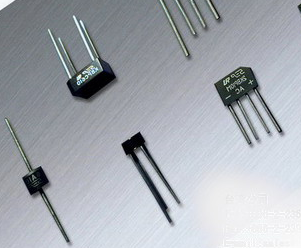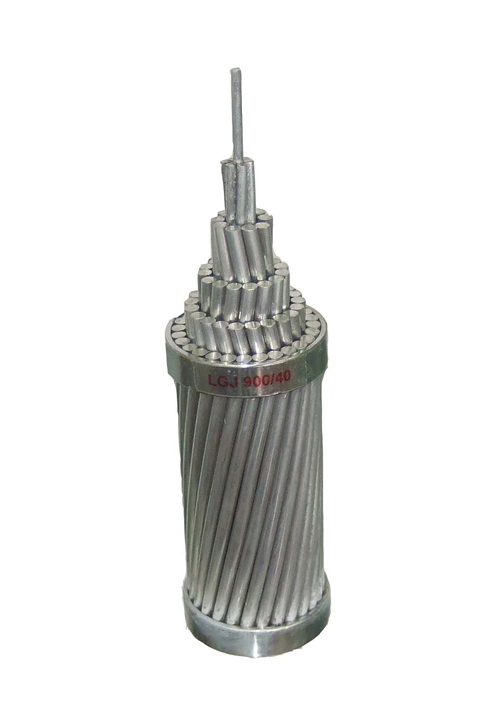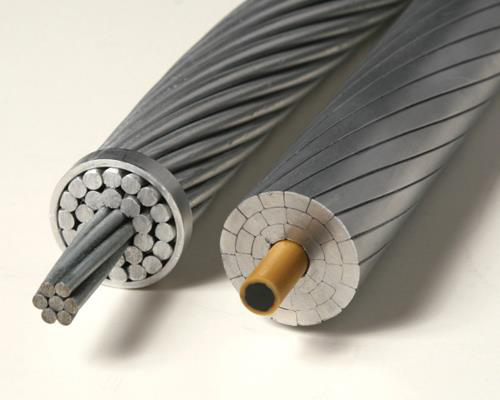The main parameters that characterize the performance of the antenna are the pattern, gain, input impedance, standing wave ratio, polarization mode, etc.
1.1 Input impedance of the antenna The input impedance of the antenna is the ratio of the input voltage at the antenna feed end to the input current. For the connection between the antenna and the feeder, the best case is that the input impedance of the antenna is pure resistance and is equal to the characteristic impedance of the feeder. At this time, there is no power reflection at the feeder terminal, and there is no standing wave on the feeder. The input impedance of the antenna changes smoothly with frequency. The matching work of the antenna is to eliminate the reactance component in the input impedance of the antenna and make the resistance component as close as possible to the characteristic impedance of the feeder. The pros and cons of matching are generally measured by four parameters namely reflection coefficient, traveling wave coefficient, standing wave ratio and return loss. There is a fixed numerical relationship between the four parameters, and it is purely customary to use that one. In our daily maintenance, standing wave ratio and return loss are mostly used. The input impedance of a general mobile communication antenna is 50Ω.
Standing wave ratio: It is the reciprocal of the traveling wave coefficient, and its value is between 1 and infinity. A standing wave ratio of 1 indicates a perfect match; a standing wave ratio of infinity indicates total reflection and complete mismatch. In mobile communication systems, the standing wave ratio is generally required to be less than 1.5, but in practical applications VSWR should be less than 1.2. Excessive VSWR will reduce the coverage of the base station and cause increased interference in the system, affecting the service performance of the base station.
Return loss: It is the reciprocal of the absolute value of the reflection coefficient, expressed in decibels. The value of the return loss is between 0dB and infinity. The greater the return loss, the worse the matching, and the larger the return loss, the better the matching. 0 means total reflection, and infinity means a perfect match. In mobile communication systems, return loss is generally required to be greater than 14dB.
![]()
1.2 Antenna polarization method The so-called antenna polarization refers to the direction of the electric field strength formed when the antenna radiates. When the electric field strength direction is perpendicular to the ground, this wave is called a vertically polarized wave; when the electric field strength direction is parallel to the ground, this wave is called a horizontally polarized wave. Due to the characteristics of radio waves, when the signal propagated by horizontal polarization is close to the ground, a polarization current will be generated on the surface of the earth. The polarization current will rapidly attenuate the electric field signal due to the thermal energy generated by the impedance of the earth, while the vertical polarization method is not easy Polarized current is generated, thereby avoiding a large attenuation of energy and ensuring the effective propagation of the signal.
Therefore, in the mobile communication system, the vertically polarized propagation method is generally adopted. In addition, with the development of new technologies, a dual-polarized antenna has recently appeared. In terms of its design ideas, it is generally divided into two ways: vertical and horizontal polarization and ± 45 ° polarization, and the latter is generally superior to the former in performance, so most of the current uses are ± 45 ° polarization. The dual-polarized antenna combines + 45 ° and -45 ° antennas with mutually orthogonal polarization directions, and works simultaneously in the transceiver duplex mode, which greatly saves the number of antennas in each cell; Orthogonal polarization effectively guarantees the good effect of diversity reception. (The polarization diversity gain is about 5dB, which is about 2dB higher than the single-polarized antenna.)
1.3 Antenna gain Antenna gain is used to measure the ability of the antenna to send and receive signals in a specific direction. It is one of the most important parameters for selecting a base station antenna.
In general, the increase in gain mainly depends on reducing the width of the lobe facing the radiation vertically, while maintaining the omnidirectional radiation performance on the horizontal plane. Antenna gain is extremely important to the operational quality of mobile communication systems because it determines the signal level at the edge of the cell. Increasing the gain can increase the coverage of the network in a certain direction, or increase the gain margin within a certain range. Any cellular system is a two-way process. Increasing the gain of the antenna can simultaneously reduce the gain budget margin of the two-way system. In addition, the parameters characterizing the antenna gain are dBd and dBi. DBi is the gain relative to the point source antenna, and the radiation in all directions is uniform; dBd is relative to the gain of the symmetric array antenna dBi = dBd + 2.15. Under the same conditions, the higher the gain, the farther the radio wave travels. Generally, the antenna gain of a GSM directional base station is 18dBi, and omnidirectional is 11dBi.
1.4 The lobe width of the antenna The lobe width is a very important parameter commonly used in directional antennas. It refers to the width of the angle formed by the antenna radiation pattern below the peak 3dB (the antenna radiation pattern is a measure of the signal received and sent in all directions of the antenna An indicator of capability, usually expressed graphically as the relationship between power intensity and included angle).
The vertical lobe width of an antenna is generally related to the coverage radius in the corresponding direction of the antenna. Therefore, by adjusting the verticality (elevation angle) of the antenna within a certain range, the purpose of improving the coverage quality of the cell can be achieved, which is also a method we often use in network optimization. It mainly involves two aspects: horizontal lobe width and vertical plane lobe width. H-Plane Half Power beamwidth: (45 °, 60 °, 90 °, etc.) defines the beam width of the antenna horizontal plane. The larger the angle, the better the coverage at the sector junction, but when the antenna tilt angle is increased, the beam distortion is more likely to occur, resulting in cross-region coverage. The smaller the angle, the worse the coverage at the sector junction. Increasing the antenna inclination can improve the coverage of the sector junction in the degree of movement, and relatively speaking, it is not easy to produce cross-coverage to other cells. In the city center, the base station has a small station distance and a large antenna tilt angle. An antenna with a small half-power angle in the horizontal plane should be used. An antenna with a large half-power angle in the horizontal plane is selected in the suburbs; ): (48 °, 33 °, 15 °, 8 °) defines the beam width of the vertical plane of the antenna. The smaller the half-power angle of the vertical plane, the faster the signal attenuation when deviating from the main beam direction, and the easier it is to accurately control the coverage area by adjusting the antenna tilt angle.
1.5 Front-Back RaTIo
This shows how well the antenna suppresses the back lobes. An antenna with a low front-to-back ratio is selected, and the rear lobes of the antenna may produce cross-over coverage, resulting in chaotic switching relationships and dropped calls. Generally between 25-30dB, antennas with a front-to-back ratio of 30 should be preferred.
Common antenna parameter settings | |
| Electrical performance ( Band 1 ) | |
technical parameter | Performance |
| Gain | 16 dBi |
| Frequency Range | 870 --- 960 MHz |
| PolarisaTIon Dual | Slant ± 45 ° |
| IsolaTIon between ports | 330 dB |
| Horizontal plane- 3dB power angle Horizontal Plane -3dB Power Beamwidth | 65 ° |
| -3dB power angle vertical plane VerTIcal Plane -3dB Power Beamwidth | 8 ° |
| Level-10dB Power Beamwidth Horizontal Plane -10dB Power Beamwidth | 125 ° |
| Impedance | 50 Ohm |
| Return Loss 870-960 MHz | 316 dB |
| Front to Back Ratio | 325 dB |
| Max Input Power per port | 150 W |
| Electrical Downtilt | 1 to 10 ° |
| Downtilt Setting Accuracy | ± 0.5 ° |
Electrical performance (Band 2) | |
| Gain | 16 dBi |
| Frequency Range | 1710-1880 MHz |
| Polarisation Dual | Slant ± 45 ° |
| Isolation between ports | 330 dB |
| Horizontal plane- 3dB power angle Horizontal Plane -3dB Power Beamwidth | 65 ° |
| -3dB power angle vertical plane Vertical Plane -3dB Power Beamwidth | 8 ° |
| Level-10dB Power Beamwidth Horizontal Plane -10dB Power Beamwidth | 120 ° |
| Impedance | 50 Ohm |
| Return Loss 870-960 MHz | 314 dB |
| Front to Back Ratio | 325 dB |
| Max Input Power per port | 125 W |
| Electrical Downtilt | 1 to 10 ° |
| Downtilt Setting Accuracy | ± 0.5 ° |
Electrical performance (general) | |
| Connector Type | 7/16 DIN, N optional |
Mechanical behavior | |
| Height | 2258 mm |
| Width | 400 mm |
| Depth | 139 mm |
| Rated wind speed | 200 km / hr |
| Thrust at Wind Speed ​​of 160 km / hr kgf 175 | |
| Weight (except for mounting rack) Weight (excluding mounting brackets) | TBOutline Drawing No MK105 kg |

Follow WeChat

Download Audiophile APP

Follow the audiophile class
related suggestion
It is precisely because of fever and audio equipment that has promoted the development of audio equipment and the improvement of cultural taste. Therefore, fever activities are welcomed by the public. As for the hair ...

Long-term evolution (LTE) wireless networks present several challenges to test equipment vendors. The LTE air interface defined by 3GPP adopts positive ...

1. Composition principle, exchange method and applicable scope of data communication 1. Composition principle of data communication DTE is a data terminal. Data terminals are grouped ...
This article introduces the various components of the data acquisition system in detail and explains the most important guidelines for each component. This article also defines the number used for PC-based ...

At present, there are mainly several types of touch screens, which are: resistive (double layer), surface capacitive and inductive capacitive, surface acoustic wave, infrared ...

This application note will introduce power measurement terms, explain the different options available for floating measurements, and highlight the advantages and disadvantages of each option. ...

The national standard GB7665-87 defines the sensor as: "A device that can feel the specified measured and converted into a usable signal according to a certain rule ...

The oscilloscope has already become one of the most effective tools for detecting electronic circuits. By observing the voltage and current waveforms of key nodes of the line, you can intuitively check the line ...

Basic knowledge of LCD display ☆ Resolution ...
This article introduces TVS, glass discharge tube, varistor, ceramic gas discharge tube, semiconductor discharge tube, self-recovery insurance ...

PoC basics PoC-Push to Talk over Cellular & nb ...
Hard disk basics When you talk about hard disks, you must be familiar with them. My Windows 98 is installed on the hard disk, and my hard disk ...
Digital camera repair basic knowledge Digital camera is also called digital camera, referred to as DCS (Digital Still Camera ...
The structure of the speaker 1. There are many types of speakers
"Display Maintenance Basics" & nbs ...
1 Standard parts

The composition of single chip ...
Section 1 Identification of Common Components 1. Resistance "R" is used in the circuit ...
Lecture 1: The characteristics of capacitors

First, the significance of electronic circuit diagrams Circuit diagrams are for research and engineering ...
Section 1 Identification of Common Components
The electric remote control toy also adds a remote control circuit to the electric toy. Common remote control circuits are ...
Purpose: Based on actual experience and actual project to understand and master the qualification of becoming a qualified hardware engineer in detail ...
...
...
Printed circuit board (Printed circuit board, P ...
Basic knowledge of radio 1. Interpretation of radio communication terms [audio], also known as audio, is what the human ear can ...
In our daily life, we often see or use various objects, it ...
![[Photo] What is the basic knowledge of PN junction and semiconductor](http://i.bosscdn.com/blog/20/06/41/523030155.gif)

